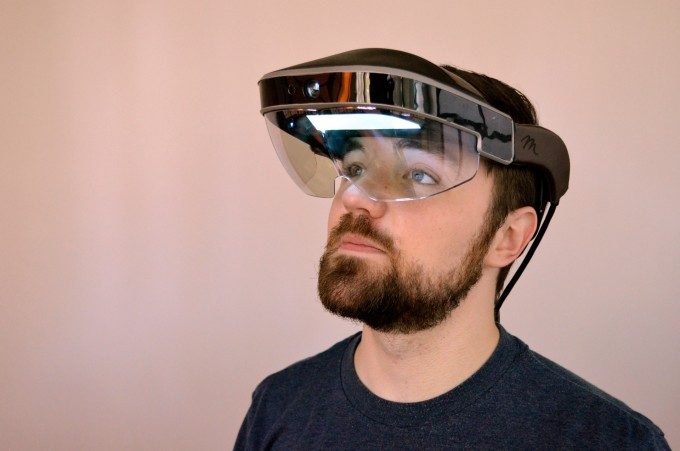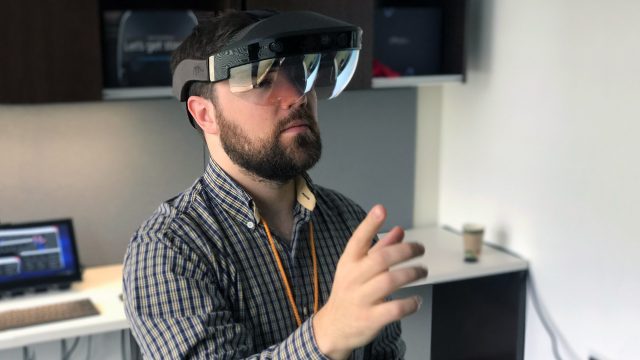The Meta 2 augmented reality dev kit began pre-orders in March of 2016 and has apparently seen quite a bit of interest. By the end of 2016, the company says they began shipping the first Meta 2 dev kits, and by the end of 2017 they expect to ship some 10,000 headsets.
“There’s more Meta 2 pre-orders than there are HoloLens headsets in the world,” Ryan Pamplin, VP of Sales & Partnerships at Meta, told me during a recent visit to check out the latest changes to the company’s AR headset. The Meta 2 uniquely features an impressive 90 degree field of view that’s a huge step up in immersion from the company’s prior Meta 1 device and other AR headsets in its class.
Actually, the Meta 2 was not originally going to be the headset to follow the Meta 1. Back in 2013 the company had announced and taken pre-orders for a $3,000 headset called the Meta Pro. But Pamplin says that that company heard resounding feedback from those working with the original Meta 1, saying that the 36 degree field of view was simply not enough. Meta Pro was only set to bump it up to 40 degrees; at some point the company realized that the Meta Pro was not the right move, and Pamplin told me that they never charged any pre-orders.
Then in March 2016 the company revealed the Meta 2, this time with a huge increase in field of view (and a more digestible $950 price tag), one that makes the headset the most visually immersive of AR devices in its category.


The big difference in field of view came from a total overhaul of the headset’s optics which is now using a dual large combiner approach rather than the waveguide approach of the Meta 1 and (would-be) Meta Pro. Waveguide optics are great because they’re thin and enable very small form-factor designs, but they have their drawbacks.
“Waveguide optics cap out around 50 degrees field of view,” Pamplin said. And while the hope is that one day we’ll be able to have AR glasses with an immersive field of view while managing to be no bigger than a pair of sunglasses, Meta realized that developers needed a wide field of view AR headset to begin building applications on today, in parallel with continued optical R&D; hence the bulky but functional Meta 2.
And it seems developers are in agreement with approach, with the company on track to ship some 10,000 Meta 2 dev kits in 2017, according to Pamplin, who says that all the initial pre-orders will ship in the next few months.
That’s a strong start when you consider not only the $950 price tag, but that these are ostensibly purely developers buying this device so that they can build stuff for other people to do with it. This traction reminds me of the early excitement of the first Rift DK1 development kit which would go on to sell around 56,000 units over roughly two years before being replaced by the Rift DK2 which would eventually double that figure.
Good developer traction at the outset is good not just for Meta, but for the entire AR space. VR in general would not be where it is today if Oculus hadn’t been able to generate early excitement and ship more than 175,000 DK1 & DK2 units to developers and early enthusiasts who were figuring out what works well in VR and what doesn’t. Having a hardware platform that’s good enough to stir the imaginations of developers cedes a foundation of conceptual and technical of knowledge that boosts other AR headsets and platforms too.
Indeed, even though it may be a few years until we see widely available consumer-ready AR devices, the AR headset space is rapidly heating up. While Meta has raised a considerable $73 million in venture capital to fund their ongoing development, giants like Microsoft, Magic Leap, and perhaps even Apple loom.
Despite the competition, the benefit of having so much activity happening in the augmented reality space is not lost on Pamplin. “Bring it on,” he says, welcoming the developments and contributions that are sure to come from many different players.

